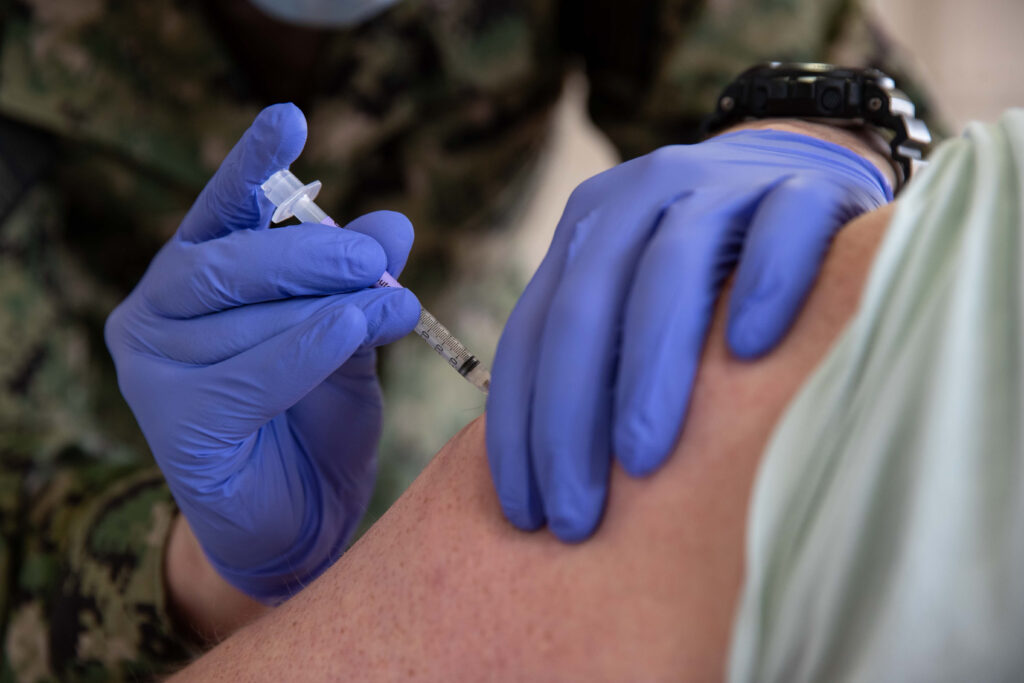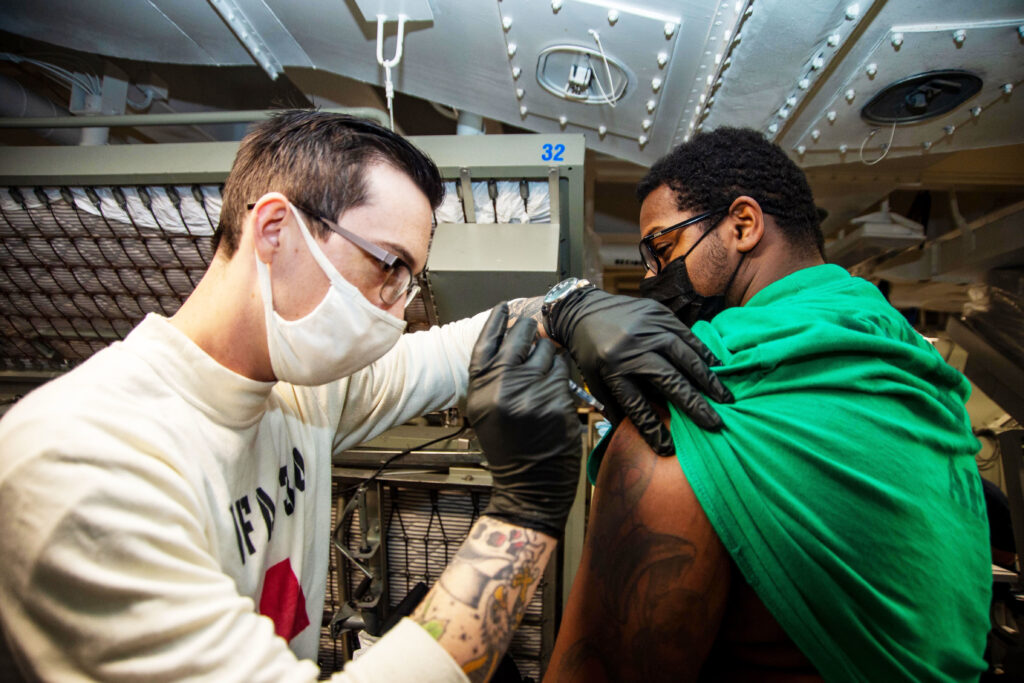COVID-19 Vaccination Mandate Still an Issue Across the Sea Services

ARLINGTON, Va. — Seven cadets at the U.S. Coast Guard Academy who refused to comply with the military’s COVID-19 vaccination mandate were disenrolled and ordered off the school’s New London, Connecticut, campus in late August.
“While the seven cadets have been disenrolled, they have not been separated from the Coast Guard Academy and are continuing to receive cadet pay and entitlements until their separation is processed,” the Coast Guard said in a statement sent to Seapower Sept. 8.
Two days after Defense Secretary Lloyd Austin’s Aug. 24, 2021, mandate requiring COVID-19 vaccine for all service members to protect the force and maintain readiness, the Coast Guard announced a vaccination requirement.
Fifteen cadets filed medical exemption or religious accommodation requests in September 2021. They were evaluated on a case-by-case basis by the Coast Guard’s Office of Military Personnel Policy and denied. The 15 cadets were notified March 14, 2022, and given 10 business days to file an appeal. The appeals were denied by Coast Guard Headquarters and all 15 were directed to report to the Academy clinic for their first dose of a COVID-19 vaccine. Four chose vaccination, four others resigned from the Academy, the Coast Guard said.
On June 13, the remaining seven cadets were told they were “in violation of the Uniform Code of Military Justice Article 90, Willfully disobeying a superior commissioned officer, and Article 92, Failure to obey [an] order or regulation,” according to the statement. They were given an additional five days to comply. On June 22, they were notified of their disenrollment and give a chance to appeal to Coast Guard Headquarters. The cadets were notified Aug. 15 their disenrollment appeals were denied and were directed “to proceed to an alternate worksite status beginning on August 19th, 2022.”
All seven “departed the Academy at their own convenience on August 19” based on their individual travel arrangements assisted by Academy staff. “All seven cadets are currently residing at a safe location, having either returned to their families or are being hosted by the families of fellow cadets,” according to the Coast Guard statement.
Several federal lawsuits are challenging the military’s process for granting religious exemptions from the vaccination mandate, including two in South Carolina and Texas involving some of the dismissed Coast Guard cadets.
Almost 5,000 Sailors and Marines have been separated from the sea services since late 2021 for vaccination refusal. The Navy has received 4,251 for religious accommodation, the Marines 3,733. Only a handful have been approved. However, a federal judge in Texas certified a class action by Sailors, including several Navy SEALS, seeking a religious exemption and issued a preliminary injunction March 30, halting separation for members of the class. A similar injunction was issued against the Marine Corps Aug. 18 by a federal judge in Florida.
A coalition of more than 20 state attorneys general has filed an amicus brief before the 5th U.S. Court of Appeals, supporting the religious liberty claims of Navy SEALs seeking exemptions from the mandatory vaccination requirement in the Texas case. While lower courts have blocked separation of vaccine refusers, the U.S. Supreme Court has ruled the Navy could consider a Sailor’s vaccination status in making deployment and other operational decisions while court challenges move through the system.
As of Aug. 31, the latest Defense Department COVID-19 statistics, 1.99 million service members have been fully vaccinated, including 387,477 in the Navy and 200,435 in the Marine Corps.
Nevertheless, as of Aug. 24, 3,000 active duty Sailors and 3,376 in the Ready Reserve remain unvaccinated. The Marine Corps’ latest COVID update doesn’t give specific figures, only stating that as of Aug. 4, just 5% of both the active duty and the reserve force were not vaccinated.
Novavax Arrives
In a related development, the Defense Department announced Aug. 29 a new COVID-19 vaccine, Novavax, will be available as an option at military clinics. Officials hope Novavax, which is approved by the Food and Drug Administration under an emergency use authorization for individuals 12 years of age and older, may be more acceptable to the thousands of troops who have refused the Pfizer, Moderna and Johnson & Johnson vaccines for religious or moral reasons.
Novavax uses technology that has been used in other vaccines required by the military, like hepatitis B vaccine. Novavax is not made with, or tested on, cells from fetal tissue. It does not use mRNA or DNA technology and does not enter the nucleus of cells, Pentagon officials said.
“We now have a range of COVID-19 vaccines available at our military medical treatment facilities and they all provide strong protection against hospitalization, severe illness and death,” Dr. Michael Malanoski, deputy director of the Defense Health Agency, said in a statement. However, as in the early days of the three other vaccines, the FDA’s emergency use authorization approval means service members cannot be compelled to take Novavax.












